Untitled By Twyscape

Untitled by twyscape
More Posts from Llamaslikesciencetoo and Others




Women in Science: 50 Fearless Pioneers Who Changed the World by Rachel Ignotofsky
I have been following @rachelignotofsky on Tumblr for several years, and I’m truly happy to see her creative art of brilliant scientists now being in a book. These amusing illustrations together with educational information make a fantastic combination. I’m getting the book for my little sister but it’s definitely a great read for everyone. You can order the book HERE.

Velociraptor by Brett Gross. Water color on water color paper. 24"x18".





Stages of decomposition
Five general stages are used to describe the process of decomposition in vertebrate animals: Fresh, Bloat, Active and Advanced Decay, and Dry/Remains. The general stages of decomposition are coupled with two stages of chemical decomposition: autolysis and putrefaction. These two stages contribute to the chemical process of decomposition, which breaks down the main components of the body.
Fresh
The fresh stage begins immediately after the heart stops beating.[5] Since blood is no longer being pumped through the body it drains to the dependent portions of the body, under gravity, creating an overall bluish-purple discolouration termed livor mortis or, more commonly, lividity. Shortly after death, within three to six hours, the muscular tissues become rigid and incapable of relaxing which is known as rigor mortis. From the moment of death, the body begins losing heat to the surrounding environment, resulting in an overall cooling called algor mortis.
Once the heart stops, chemical changes occur within the body and result in changes in pH, causing cells to lose their structural integrity. The loss of cell structure brings about the release of cellular enzymes capable of initiating the breakdown of surrounding cells and tissues. This process is known as autolysis. Visible changes caused by decomposition are limited during the fresh stage, although autolysis may cause blisters to appear at the surface of the skin.
Oxygen present in the body is quickly depleted by the aerobic organisms found within. This creates an ideal environment for the proliferation of anaerobic organisms. Anaerobic organisms, originating in the gastrointestinal tract and respiratory system, begin to transform carbohydrates, lipids, and proteins, to yield organic acids (propionic acid, lactic acid) and gases (methane, hydrogen sulphide, ammonia). The process of microbial proliferation within a body is referred to as putrefaction and leads to the second stage of decomposition, known as bloat.
Blowflies and flesh flies are the first carrion insects to arrive, and seek a suitable oviposition site.
Bloat
The bloat stage provides the first clear visual sign that microbial proliferation is underway. In this stage, anaerobic metabolism takes place, leading to the accumulation of gases, such as hydrogen sulphide, carbon dioxide, and methane. The accumulation of gases within the bodily cavity causes the distention of the abdomen and gives a cadaver its overall bloated appearance. The gases produced also cause natural liquids and liquefying tissues to become frothy. As the pressure of the gases within the body increases, fluids are forced to escape from natural orifices, such as the nose, mouth, and anus, and enter the surrounding environment. The buildup of pressure combined with the loss of integrity of the skin may also cause the body to rupture.
Intestinal anaerobic bacteria transform haemoglobin into sulfhemoglobin and other colored pigments. The associated gases which accumulate within the body at this time aid in the transport of sulfhemoglobin throughout the body via the circulatory and lymphatic systems, giving the body an overall marbled appearance.
If insects have access, maggots hatch and begin to feed on the body’s tissues. Maggot activity, typically confined to natural orifices and masses under the skin, causes the skin to slip and hair to detach from the skin. Maggot feeding, and the accumulation of gases within the body, eventually leads to post-mortem skin ruptures which will then further allow purging of gases and fluids into the surrounding environment. Ruptures in the skin allow oxygen to re-enter the body and provide more surface area for the development of fly larvae and the activity of aerobic microorganisms. The purging of gases and fluids results in the strong distinctive odours associated with decay.
Active decay
Active decay is characterized by the period of greatest mass loss. This loss occurs as a result of both the voracious feeding of maggots and the purging of decomposition fluids into the surrounding environment. The purged fluids accumulate around the body and create a cadaver decomposition island (CDI). Liquefaction of tissues and disintegration become apparent during this time and strong odours persist. The end of active decay is signaled by the migration of maggots away from the body to pupate.
Advanced decay
Decomposition is largely inhibited during advanced decay due to the loss of readily available cadaveric material. Insect activity is also reduced during this stage. When the carcass is located on soil, the area surrounding it will show evidence of vegetation death. The CDI surrounding the carcass will display an increase in soil carbon and nutrients, such as phosphorus, potassium, calcium, and magnesium; changes in pH; and a significant increase in soil nitrogen.
Dry/remains
During the dry/remains stage, the resurgence of plant growth around the CDI may occur and is a sign that the nutrients present in the surrounding soil have not yet returned to their normal levels. All that remains of the cadaver at this stage is dry skin, cartilage, and bones, which will become dry and bleached if exposed to the elements. If all soft tissue is removed from the cadaver, it is referred to as completely skeletonized, but if only portions of the bones are exposed, it is referred to as partially skeletonised.
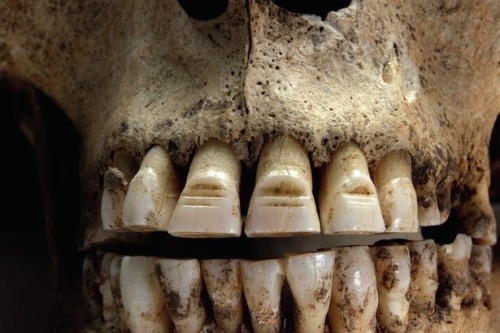
Viking men were also heavily tattooed but their most striking and fearsome fashion statement was their gnashers.
They would file horizontal lines into the enamel on their front teeth and paint in red resin. Gareth Williams (curator of the exhibition, Vikings: life and legend) says: “That’s like your punk sticking a safety pin through his nose. It would have been very uncomfortable and it’s quite deliberately saying ‘If I’m prepared to do this to myself, what am I going to do to you?’.” (Source)

The blood vessels on your head.

Baby parrots look like dinosaurs (Source: http://ift.tt/21GVxRO)

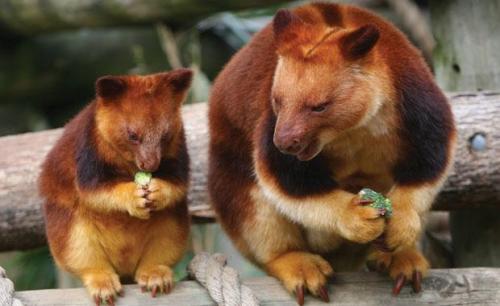
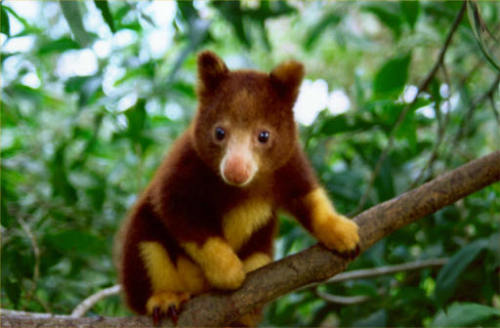
(Fact Source)
Follow Ultrafacts for more facts
![[x]](https://64.media.tumblr.com/accf6b4514b2214fe106567daf0397bd/tumblr_o4bdqwebao1sstavyo1_500.jpg)
[x]

DON’T GO IN THE WATER: NEW EVIDENCE THAT SOME DINOSAURS WERE STRONG SWIMMERS
Claw marks left on a river bottom in Sichuan, China are evidence for dinosaurs’ ability to swim relatively long distances. According to an international team of scientists in the journal Chinese Science Bulletin, theropod species of dinosaurs were able to travel in relatively deep bodies of water.
Keep reading
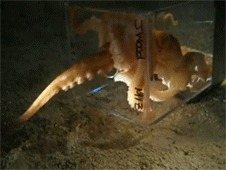
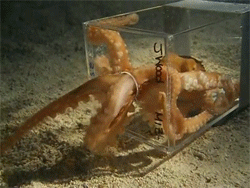




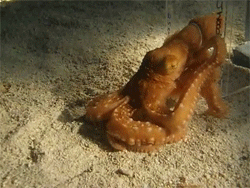
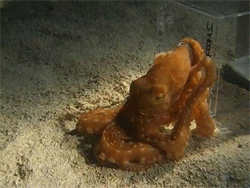
-
 inlustriis liked this · 8 years ago
inlustriis liked this · 8 years ago -
 autokrates reblogged this · 8 years ago
autokrates reblogged this · 8 years ago -
 nicholasembly reblogged this · 9 years ago
nicholasembly reblogged this · 9 years ago -
 nicholasembly liked this · 9 years ago
nicholasembly liked this · 9 years ago -
 deep-in-the-water reblogged this · 9 years ago
deep-in-the-water reblogged this · 9 years ago -
 eatyosaladnodessert reblogged this · 9 years ago
eatyosaladnodessert reblogged this · 9 years ago -
 deepsea reblogged this · 9 years ago
deepsea reblogged this · 9 years ago -
 chronicles-of-a-rabbit reblogged this · 9 years ago
chronicles-of-a-rabbit reblogged this · 9 years ago -
 johnmyersart reblogged this · 9 years ago
johnmyersart reblogged this · 9 years ago -
 othiym reblogged this · 9 years ago
othiym reblogged this · 9 years ago -
 the-worm-that-gnaws-in-the-night reblogged this · 9 years ago
the-worm-that-gnaws-in-the-night reblogged this · 9 years ago -
 vintagemarlene liked this · 9 years ago
vintagemarlene liked this · 9 years ago -
 llamaslikesciencetoo reblogged this · 9 years ago
llamaslikesciencetoo reblogged this · 9 years ago -
 konkonvulpix reblogged this · 9 years ago
konkonvulpix reblogged this · 9 years ago -
 sassy--goat reblogged this · 9 years ago
sassy--goat reblogged this · 9 years ago -
 kingkanda reblogged this · 9 years ago
kingkanda reblogged this · 9 years ago -
 oceansofazeroth reblogged this · 9 years ago
oceansofazeroth reblogged this · 9 years ago -
 permagrinphoto liked this · 9 years ago
permagrinphoto liked this · 9 years ago -
 laf9 liked this · 9 years ago
laf9 liked this · 9 years ago -
 naturalblondekiller liked this · 9 years ago
naturalblondekiller liked this · 9 years ago -
 johnmyersart liked this · 9 years ago
johnmyersart liked this · 9 years ago -
 alligiraffe liked this · 9 years ago
alligiraffe liked this · 9 years ago -
 longhairdontcare13 liked this · 9 years ago
longhairdontcare13 liked this · 9 years ago -
 longhairdontcare13 reblogged this · 9 years ago
longhairdontcare13 reblogged this · 9 years ago -
 alice2002g-blog liked this · 9 years ago
alice2002g-blog liked this · 9 years ago -
 soulerflaire liked this · 9 years ago
soulerflaire liked this · 9 years ago -
 dream-small-do-big reblogged this · 9 years ago
dream-small-do-big reblogged this · 9 years ago -
 eveningstar09 liked this · 9 years ago
eveningstar09 liked this · 9 years ago -
 solfdzswflki3 liked this · 9 years ago
solfdzswflki3 liked this · 9 years ago -
 hellojaime liked this · 9 years ago
hellojaime liked this · 9 years ago -
 letscodyhallcox reblogged this · 9 years ago
letscodyhallcox reblogged this · 9 years ago -
 sassy--goat liked this · 9 years ago
sassy--goat liked this · 9 years ago -
 mastersoftheslutverse reblogged this · 9 years ago
mastersoftheslutverse reblogged this · 9 years ago -
 jae1212-blog liked this · 9 years ago
jae1212-blog liked this · 9 years ago -
 snartofdarkness liked this · 9 years ago
snartofdarkness liked this · 9 years ago
Mainly interested in ecology, but also the entirety of science.
179 posts